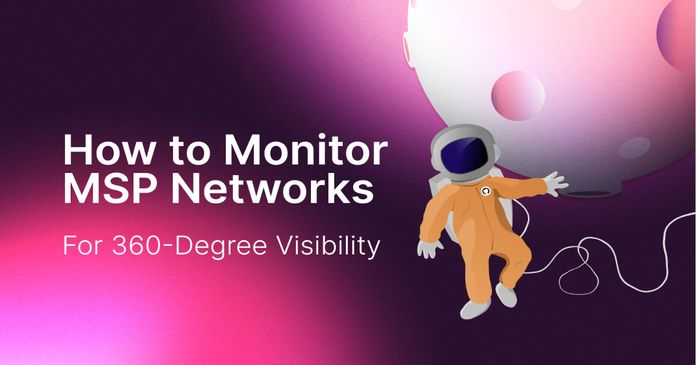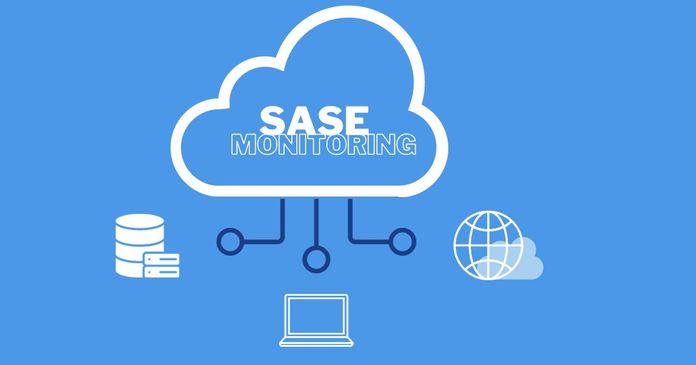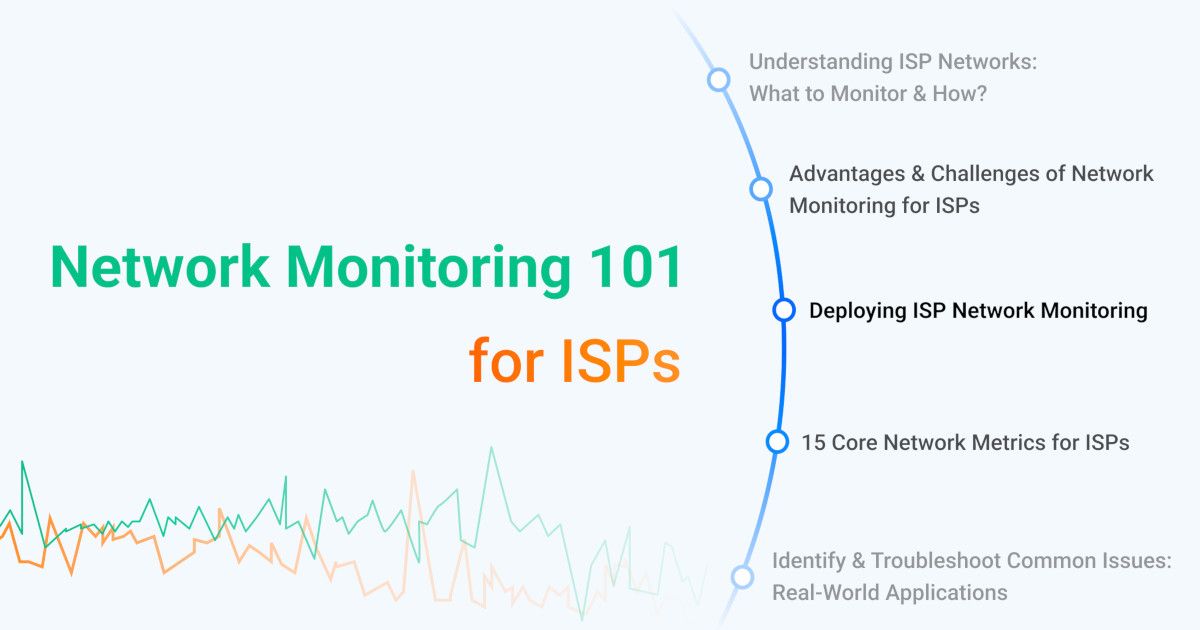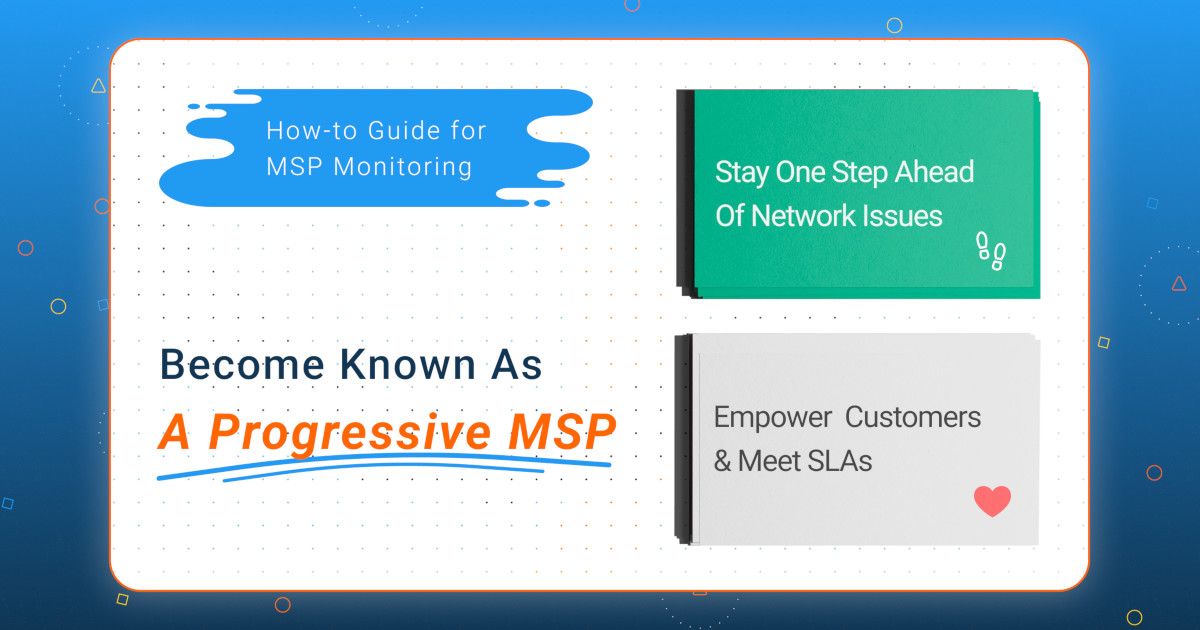Table of Contents
Table of Contents
Nowadays businesses are confronted with increasingly sophisticated cyber threats that pose significant risks to their operations, data, and reputation. To combat these threats effectively, organizations often turn to Managed Security Service Providers (MSSPs) for expert guidance and support. Unlike traditional Managed Service Providers (MSPs), MSSPs specialize in delivering comprehensive security and network monitoring solutions tailored to the unique needs of their clients.
However, MSSPs themselves face the daunting task of safeguarding networks against a myriad of threats while ensuring optimal network performance. Thus, the need for robust network monitoring solutions has become paramount. By providing real-time visibility into network traffic and activities, network monitoring empowers MSSPs to detect and respond to security incidents promptly, mitigate risks, and maintain the integrity of their clients' networks.
In this article, we delve into the intricacies of MSSP monitoring use cases, focusing on the indispensable role of network monitoring in fortifying the security defences and network performance of MSSPs and their clients.
A managed security service provider (MSSP) serves as a critical ally in defending an organization's digital assets against the ever-evolving landscape of cyber threats. When companies engage with an MSSP, they entrust them with overseeing various aspects of their cybersecurity infrastructure. Whether it's safeguarding applications, devices, or systems, an MSSP offers outsourced monitoring and management tailored to the organization's security requirements.
Typically, MSSPs deliver a range of services to their clients, including:
- Managed firewall
- Intrusion detection
- Virtual private network (VPN)
- Vulnerability scanning
- Managed SD-WAN
- Managed SASE
- Managed detection and response (MDR)
- Antivirus services
- Network monitoring
- Help desk support
- Cloud computing
- Data backup and recovery
To ensure uninterrupted protection, MSSPs operate high-availability security operation centers (SOCs) equipped to deliver round-the-clock monitoring and response. These SOCs, whether housed within the MSSP's facilities or through partnered data center providers, aim to minimize the need for organizations to hire, train, and retain dedicated security personnel.
Central to the MSSP's operations is their expertise in security monitoring and incident response across enterprise networks and endpoints. As organizations embrace cloud-based infrastructure and expand their digital footprint, MSSPs have adapted by extending their support to cover these evolving platforms, ensuring comprehensive security coverage for their clients.
It's crucial to distinguish between MSPs and MSSPs, as their focus and services differ significantly. While MSPs offer general network and IT support, including managed telecommunications and Software as a Service (SaaS) platforms, MSSPs are solely dedicated to providing specialized security services.


One notable disparity between the two lies in their operations centers. While MSPs typically operate network operations centers (NOCs) for monitoring and managing client networks, MSSPs maintain security operations centers (SOCs) that focus on continuous security monitoring and rapid incident response. This distinction underscores the MSSP's commitment to delivering proactive and targeted security solutions tailored to the unique needs of their clients.
According to a recent forecast from Gartner, end-user spending on security and risk management globally is expected to reach $215 billion in 2024, up 14.3% from 2023. Global end-user spending on security and risk management is projected to reach $188.1 billion in 2023.
Network monitoring serves as a cornerstone in the arsenal of cybersecurity defences, offering real-time visibility into network traffic, activities, and potential security vulnerabilities.
For MSSPs, effective network monitoring is essential to fulfilling their mandate of safeguarding their clients' networks against cyber threats. Here's why network monitoring is indispensable for MSSPs:
Proactive Threat Detection: Network monitoring enables MSSPs to detect suspicious activities, anomalies, and potential security breaches in real-time. By continuously monitoring network traffic and behaviour, MSSPs can identify and respond to threats before they escalate into full-blown security incidents.
Early Incident Response: Rapid incident response is critical in mitigating the impact of security breaches. Network monitoring allows MSSPs to promptly detect and respond to security incidents, minimizing downtime, data loss, and financial damages for their clients.
Optimized Security Posture: Comprehensive network monitoring provides MSSPs with insights into their client's security posture, allowing them to identify and address security gaps, misconfigurations, and vulnerabilities proactively. By maintaining a robust security posture, MSSPs help mitigate the risk of successful cyber attacks.
Performance Optimization and Continuous Monitoring: Beyond security concerns, network monitoring also aids in optimizing network performance. By monitoring key performance metrics such as latency, packet loss, throughput, jitter, MSSPs can identify bottlenecks, optimize network resources, and ensure smooth and efficient operations for their clients. Continuous monitoring of both the MSSP performance and their customers' networks allows MSSPs to proactively identify and troubleshoot issues, ensuring uninterrupted service delivery and customer satisfaction.
Compliance Requirements: Many industries are subject to strict regulatory requirements regarding data protection and privacy. Network monitoring helps MSSPs ensure compliance with regulations such as GDPR, HIPAA, PCI DSS, and SOC 2 by providing detailed insights into network activities and security controls.

In contrast to the majority of other IT tasks, security is not a 9 to 5 job. MSSPs make sure that businesses receive a customized package of services according to their requirements, providing an unparalleled degree of redundancy and offering businesses round-the-clock availability.
Furthermore, increasing the effectiveness and efficiency of security operations is ranked as one of the top 5 technological priorities by 84% of enterprises. For MSSP clients, the benefits of network monitoring are equally compelling.
By partnering with an MSSP that leverages robust network monitoring solutions, clients gain:
Enhanced Security Posture: Clients benefit from proactive threat detection and incident response, reducing the risk of security breaches and potential damages to their business reputation.
Cost-Effectiveness: Another significant benefit for MSSP clients is the cost-effectiveness of working with an MSSP compared to hiring an internal team. Building and maintaining an in-house cybersecurity team can be prohibitively expensive for many companies. By outsourcing their security needs to an MSSP, clients can access a team of experienced professionals and cutting-edge technologies at a fraction of the cost.
Peace of Mind: Knowing that their networks are continuously monitored by experienced security professionals provides clients with peace of mind, allowing them to focus on their core business activities without worrying about cybersecurity threats.
Compliance Assurance: Network monitoring helps clients demonstrate compliance with regulatory requirements and SLAs, ensuring that they meet the necessary standards for data protection and privacy.
Improved Network Performance: Clients enjoy optimized network performance and reliability, resulting in enhanced productivity and user experience for their employees and customers.
In essence, network monitoring is not just a technological necessity but a strategic imperative for MSSPs and their clients alike. By investing in robust network monitoring solutions and leveraging the insights they provide, MSSPs can effectively strengthen their clients' cybersecurity defences, mitigate risks, ensure business continuity, uphold SLAs, and safeguard the reliability and reputation of their services in the face of evolving cyber threats.
Explore the essentials of MSP network monitoring. Learn to monitor MSP network performance towards client networks, and identify performance issues.
Learn more

Managed Security Service Providers (MSSPs) deliver a wide range of services, including managed firewalls, intrusion detection, virtual private network (VPN), vulnerability scanning, and more. However, all of these services are susceptible to poor network performance, which can significantly impact the effectiveness of MSSP performance, their offerings and the end-user experience.
Therefore, MSSP monitoring for network and end-user performance is particularly important to ensure the seamless delivery of services and optimize the overall client experience.
Let's delve into how network performance monitoring enhances the capabilities of MSSPs in these critical areas:
MSSPs can assist clients in improving their networks and directing traffic to branch offices and faraway locations. Network security teams can more effectively manage their WAN architecture by centralizing network monitoring with secure SD-WAN solutions.
Managed SD-WAN services offer organizations a flexible and cost-effective solution for optimizing connectivity and improving network performance across distributed locations.
Network performance monitoring is essential in this use case to:
Monitor and Troubleshoot SD-WAN Performance: Despite the advantages offered by SD-WAN technology, businesses often lack sufficient visibility into their SD-WAN networks. Additionally, native SD-WAN monitoring features may not provide the depth and granularity needed to effectively monitor modern WAN networks.
Optimize Traffic Routing: By continuously monitoring network performance metrics such as latency, packet loss, and jitter, MSSPs can dynamically adjust traffic routing policies to ensure optimal performance and reliability for critical applications.
Ensure Quality of Service (QoS): Network performance monitoring enables MSSPs to prioritize traffic based on application requirements, ensuring that mission-critical applications receive the necessary bandwidth and latency requirements to maintain optimal performance.
Identify and Resolve Connectivity Issues: By monitoring network performance in real-time, MSSPs can quickly identify and troubleshoot connectivity issues such as link failures or congestion, minimizing downtime and ensuring uninterrupted access to essential resources.
Learn how to monitor SD-WAN networks with Network Monitoring to get complete visibility over your SD-WAN service and identify SD-WAN issues.
Learn more

More than half of enterprises turn to managed security service providers for efficient network management and implementation. Here are four considerations when offering your clients these managed services:
- Security: Without centralized visibility, network infrastructures could have security flaws that leave companies vulnerable to online threats. Next-generation firewall (NGFW) capabilities should be incorporated into every SD-WAN solution to fully minimize risks and lower capital and operating costs.
- Better Application Performance: Issues with current wide area networks (WANs), like slow application performance and extended outages, can impede corporate goals and productivity. Businesses benefit from increased control over WAN operations and more effective application management throughout the entire infrastructure thanks to SD-WAN. By utilizing SD-WAN solutions, which provide greater visibility and the capacity to dynamically switch traffic between MPLS and public cloud connections, enterprises may improve application performance.
- Scalability: Your SD-WAN solution needs to grow with your clients' businesses without compromising on functionality. To ensure regulatory compliance and enable smooth expansion, it should have integrated encryption inspection and processing capabilities.
- Compliance Management: To save resources and expedite compliance processes, managed SD-Branch systems should include centralized and automated logging, auditing, and reporting capabilities.

It can be quite difficult to find internal IT personnel with the necessary experience to manage SASE, especially given the current employment market: According to a ManpowerGroup survey conducted in 2023, 76% of IT companies believe they're having trouble getting the hard and soft skills they require, and one in five organizations worldwide are having trouble recruiting qualified tech personnel. That’s why, 45% of businesses intend to collaborate with MSSPs to optimize or execute their SASE solutions.
Due to the fact that SD-WAN design makes wide-area networks between locations and applications easier to manage and can be used anywhere with any kind of connectivity (broadband, LTE/5G, MPLS, etc.). Rapid, dependable, and secure application access is made possible by the application-driven SD-WAN architecture.
An essential component of a SASE solution is SD-WAN. As a result of their extensive experience working with partners and clients to support SD-WAN installations, many MSSPs are well-equipped to support their clients as they go on their secure networking journeys.
Managed Secure Access Service Edge (SASE) solutions integrate network security and connectivity into a unified cloud-based service, offering organizations comprehensive protection and flexibility. Network performance monitoring is crucial in this use case to:
Ensure Secure Connectivity: Network performance monitoring allows MSSPs to assess the performance of SASE components such as VPN tunnels and secure web gateways, ensuring secure and reliable connectivity for remote users and branch offices.
Optimize Cloud Application Performance: By monitoring network performance metrics for cloud-based applications and services, MSSPs can identify performance bottlenecks and optimize traffic routing to ensure optimal user experience and productivity.
Detect and Mitigate Security Threats: Network performance monitoring helps MSSPs detect anomalies and suspicious activities that may indicate security threats, enabling proactive threat detection and response to safeguard sensitive data and resources.
Unlock the power of your SASE architecture with effective monitoring. Learn how to optimize SASE performance and security with data-driven insights.
Learn more

Firewalls serve as a critical layer of defence, acting as a barrier between internal networks and external threats. These security appliances meticulously regulate the flow of traffic and are meticulously configured for each network to prevent unauthorized access and messages from infiltrating the system.
For MSSPs, monitoring and managing firewalls are essential components of their security arsenal. By closely observing and tracking patterns in their clients' network traffic, MSSPs gain valuable insights into potential security vulnerabilities and emerging threats. These observations inform strategic decisions aimed at fortifying the overall security posture of their clients.
Moreover, MSSPs offer managed firewall services that keep clients informed about any security incidents or anomalies that may arise. In the event of a security breach or deviation from established security parameters, MSSP alert systems promptly notify clients, enabling swift action to address the issue and prevent future occurrences.
Network performance monitoring plays a vital role in this use case to:
Ensure Firewall Performance: By monitoring key firewall performance metrics such as throughput, connection latency, and CPU utilization, MSSPs can ensure that firewall devices operate at peak performance levels, minimizing latency and processing delays.
Identify Anomalies and Intrusions: Network performance monitoring helps MSSPs detect unusual patterns or deviations from normal traffic behaviour, which may indicate unauthorized access attempts or potential intrusions. Timely detection enables MSSPs to respond promptly and mitigate security risks.
Optimize Firewall Rules and Policies: By analyzing network traffic patterns and performance data, MSSPs can fine-tune firewall rules and policies to align with the organization's security requirements and compliance mandates, ensuring effective protection against evolving threats.


However, the management of firewalls entails a multitude of tasks that demand constant attention and expertise. A single firewall requires regular maintenance, including the review of rule sets, firmware patching, and configuration updates. This workload is compounded exponentially with each additional firewall deployed within an environment. Insufficient staffing or lack of critical skills necessary to maintain these firewalls can lead to serious security oversights, potentially resulting in the loss or compromise of critical data.
Undetected anomalies such as unexpected bursts in network traffi (packet bursts) or CPU utilization within a firewall can indicate underlying issues that, if left unaddressed, may escalate into more significant problems over time.
Several factors influence the performance of firewalls, including:
- Volume and Type of Traffic: The amount and nature of network traffic passing through the firewall impact its performance and effectiveness in filtering out malicious content.
- User Load: The number of users accessing the network through the firewall affects its processing capacity and response times.
- VPN Connections: The number of concurrent VPN connections managed by the firewall can strain its resources and impact overall performance.
- Security Features: The complexity and quantity of security features enabled on the firewall influence its processing capabilities and effectiveness in detecting and blocking threats.
While MSSPs deploy advanced monitoring tools as proactive defences, clients also play a crucial role in ensuring the quality of service they expect. Striking the right balance between these elements is paramount to success.
For MSSPs, investing in robust monitoring software is not only imperative but a cornerstone of delivering top-notch services and maintaining client satisfaction. These tools serve as vigilant guardians, swiftly identifying and resolving issues before they escalate into significant problems.
On the client side, actively monitoring network performance ensures that promised service levels are met and they receive optimal value for their investment in MSSP services.
However, the true challenge lies in effectively detecting, locating the origin and addressing issues before they impact the business operations of end users. Incorporating MSSP performance monitoring software into the technology arsenal is crucial for several reasons:
Early Warning System: MSSP monitoring software serves as an early-warning system, flagging areas that require immediate attention before they develop into critical issues affecting network performance or security.
User Perspective: Identifying network performance issues solely from a user's perspective can be challenging without tailored MSSP performance monitoring software. The absence or inadequacy of such tools makes it difficult to pinpoint issues promptly, potentially leading to prolonged downtime or service disruptions.
Additional challenges faced by MSSPs in network monitoring include:
Application and Cloud Performance: Inadequate monitoring tools for application and cloud performance can result in unexpected service disruptions, impacting both MSSPs and their clients.
Alert Overload: Traditional network monitoring systems may overwhelm MSSPs with alerts during IT incidents, hindering swift issue resolution and response. Network admins believe that a large number of alerts are false positives, over 31% of businesses acknowledged completely disregarding them, and over 40% believe that the alerts they receive do not include useful information.
Event Correlation: Outdated monitoring solutions often lack event correlation capabilities, making it challenging for MSSPs to identify patterns between IT events and leading to unplanned shutdowns.
Infrastructure Complexity: Managing IT infrastructure's growing complexity without a proportional workforce or modern network monitoring solutions poses significant challenges for MSSPs.
Visibility: Poor network visibility into the internal states of networks hampers MSSPs' ability to enhance uptime and navigate modern IT complexities effectively.
Extended Time Required for Issue Resolution: Traditional monitoring tools often lack comprehensive visibility into all ends of the network, making it challenging to pinpoint the root cause of an issue efficiently. This lack of visibility is compounded by the use of multiple tools, which further complicates the investigation process.
On average, MSSPs interact with six different tools to investigate a single alert, dedicating an average of 3 hours to resolving each investigation. This fragmented approach not only prolongs the time taken to identify and address network issues but also increases the risk of overlooking critical insights or misinterpreting data due to the disjointed nature of the investigation process.
Solving the Challenges: Implementing Modern MSSP Monitoring Solutions for Network & Service Performance
By implementing advanced network monitoring software, MSSPs can revolutionize their problem-solving capabilities and elevate their service delivery to new heights.
Modern network monitoring software like Obkio offers a range of benefits that address the challenges faced by MSSPs:
Transparency and Accountability: Obkio provides transparency regarding responsibilities and facilitates comprehensive network assessments. They enable MSSPs to pinpoint the root cause of network issues, identify the specific time and location of incidents, and assign responsibilities to individuals for addressing and resolving problems.
Proactive Approach: Unlike traditional monitoring tools primarily operating in reactive mode, cutting-edge solutions like Obkio's Network Monitoring tool offer a proactive approach. These solutions transcend the limitations of traditional tools by adopting strategies such as synthetic monitoring, baseline assessments for each core network segment, and strategically deployed monitoring agents to observe performance across the entire network, from LAN to WAN.
Early Issue Identification and Resolution: The proactive stance of Obkio’s tools doesn't stop at detection, it also focuses on resolving issues at their inception. By identifying and addressing issues early on, MSSPs can ensure a seamless network experience for their clients, minimizing disruptions and maximizing operational efficiency.
With tools like Obkio's Network Monitoring, MSSPs can streamline their operations, enhance their ability to detect and respond to network issues proactively, and ultimately deliver superior services to their clients.

Ready to take your MSSP monitoring to the next level?
- 14-day free trial of all premium features
- Deploy in just 10 minutes
- Monitor performance in all key network locations
- Measure real-time network metrics
- Identify and troubleshoot live network problems

To comprehensively monitor network performance across the whole MSSP infrastructure, it's essential to deploy Network Monitoring Agents at every endpoint within the network. This includes:
- Data Centers: Deploy monitoring agents within MSSP data centers to monitor the performance and security of core infrastructure components, such as servers, firewalls, and load balancers.
- Edge Devices and Gateways: Install monitoring agents on edge devices and gateways to monitor incoming and outgoing network traffic.
- Cloud Environments: If the MSSP utilizes cloud services, deploy monitoring agents within the cloud environment to track the performance and security of cloud-based resources.
- Network Perimeter: Place monitoring agents at the network perimeter to monitor traffic entering and leaving the MSSP network.
- Internal Network Segments: Deploy monitoring agents within internal network segments to monitor communication and traffic patterns between different parts of the MSSP network.
- Client-Side Monitoring: Implement monitoring agents at client network entry points to monitor traffic and interactions between the MSSP network and client networks.
- Critical Infrastructure: Place monitoring agents on critical infrastructure components such as routers, switches, and key servers to closely track their performance and detect any signs of degradation or compromise.
- Endpoint Devices: Deploy endpoint monitoring agents on servers, workstations, and other endpoint devices within the MSSP network.

Every 500 milliseconds, they exchange synthetic traffic to track performance between all network locations. The Monitoring Agents gather data to assist you in troubleshooting internally, with your clients or their telecom providers, measure network metrics, and notify you of network issues.
Next, to assess performance metrics and raise alarms when network issues are found, the Agents establish Monitoring Sessions by exchanging synthetic UDP packets every two sets of Agents.
Once deploying Monitoring Agents, MSSPs should monitor the performance of both their network and services.
This means deploying agents across the MSSP data centers, edge devices, gateways, cloud environments, network perimeters, internal network segments, client-side entry points, critical infrastructure components, and endpoint devices. By implementing monitoring at these key locations, MSSPs can proactively identify and address potential security threats, optimize network performance, and ensure the delivery of high-quality security services to client networks. This distributed monitoring approach enhances the MSSP's ability to detect anomalies, respond to incidents promptly, and maintain the integrity and reliability of their security infrastructure

MSSPs can additionally use live traceroutes as part of their MSSP monitoring strategy using Obkio Vision to identify if performance issues are happening in their network or their customers’ networks. Traceroutes revealed any bottlenecks or network problems along the way and offered insightful information about the path network packets took. With this information, MSSPs can actively troubleshoot network issues in their network, or inform their customers that issues are not on their own.

Monitoring the CPU and bandwidth usage of MSSP firewall services is essential for maintaining a balance between security and performance. It enables MSSPs to identify and troubleshoot problems in their firewall services, ultimately contributing to a reliable and secure network environment for both the MSSP and its clients.
There are situations when the resources and configurations of a firewall contribute to sporadic issues with your Internet connection. For this reason, MSSPs and their customers should keep an eye on how much CPU and bandwidth are being used by network devices like firewalls.

Obkio's Network Device Monitoring capability can be used for this.
SNMP Polling is used in network device monitoring to track the functionality of networking devices, including switches, routers, firewalls, and wifi access points.
It swiftly detects and diagnoses Internet issues linked to brief traffic spikes, CPU consumption, or excessive bandwidth usage that impact network performance. It does this by using ultra-fast polling, which occurs every 30 seconds.
CPU Usage: Monitoring the CPU usage of firewall services helps MSSPs gauge the processing load on the firewall devices. High CPU usage may indicate increased traffic, resource-intensive security operations, or potential performance bottlenecks.
Bandwidth Usage: Bandwidth usage monitoring is essential to understand the volume and patterns of data flowing through the firewall services. Tracking bandwidth usage allows MSSPs to identify potential network congestion or security threats.
Historical data is another important factor for Managed Security Service Providers (MSSPs) monitoring network performance. Obkio measures and gathers historical network performance data to enable MSSPs to compare, evaluate, and troubleshoot past performance. They can gain valuable insights into the network's behaviour over time, identify patterns, anticipate trends, and proactively address potential issues.
Historical data also serves as a crucial reference point for assessing the effectiveness of security measures and allows MSSPs to trace the evolution of network performance allowing them to identify intermittent network issues or recurring issues that might have otherwise gone unnoticed. This retrospective analysis not only aids in troubleshooting but also contributes to informed decision-making, ensuring that the MSSP can consistently deliver secure and high-performing services to clients.
Effective network monitoring is equally essential for MSSPs to fulfill their mandate of fortifying security defences while maintaining optimal network performance. Network monitoring serves as a proactive shield, enabling MSSPs to detect and respond to security incidents promptly, mitigate risks, and uphold the reliability and reputation of their services.
While MSSPs specialize in the security aspect of their clients' networks, it's crucial to recognize that network monitoring is an integral part of the equation. One cannot be done without the other.
By investing in robust network monitoring solutions like Obkio, MSSPs can revolutionize their problem-solving capabilities, streamline their operations, and ensure a seamless network experience for their clients. With comprehensive visibility into network traffic and activities, MSSPs can proactively identify and address issues before they impact business operations, mitigate risks, and uphold service level agreements (SLAs).

Put It to the Test: Trying Is the Ultimate Way to Learn!
Networks may be complex. But Obkio makes network monitoring easy. Monitor, measure, pinpoint, troubleshoot, and solve network problems.
- 14-day free trial of all premium features
- Deploy in just 10 minutes
- Monitor performance in all key network locations
- Measure real-time network metrics
- Identify and troubleshoot live network problems













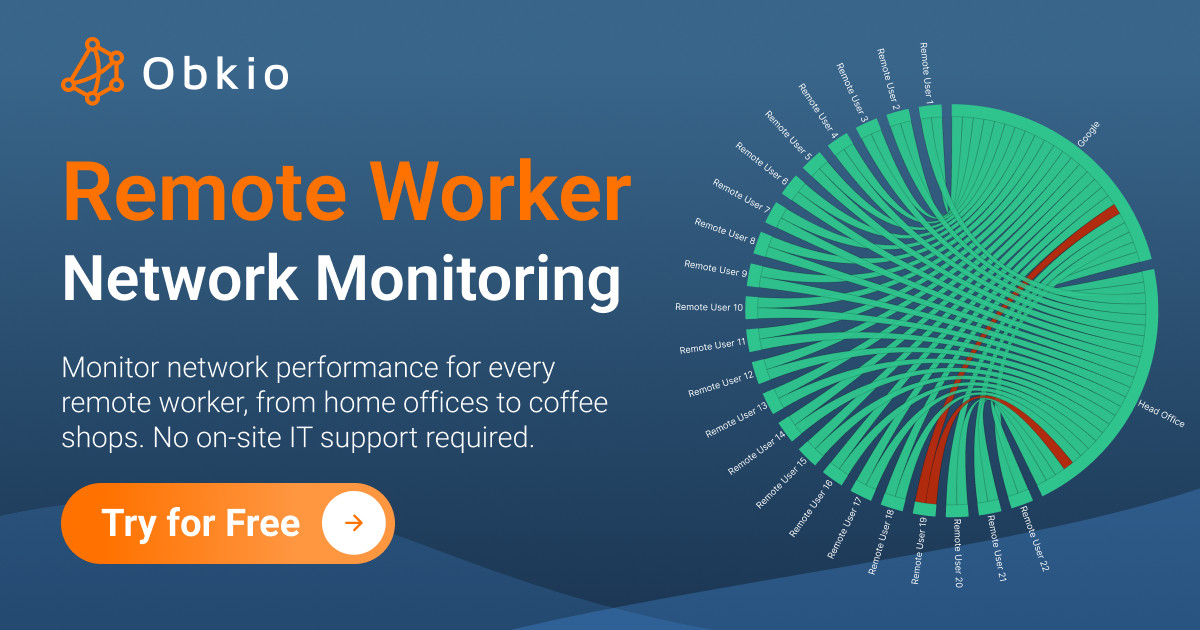













 Obkio Blog
Obkio Blog



